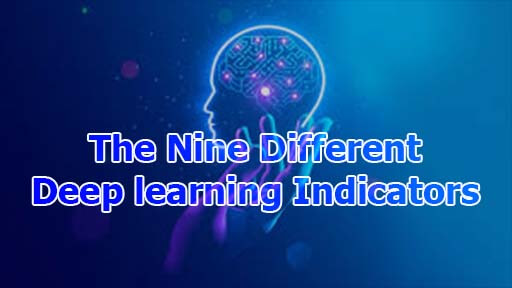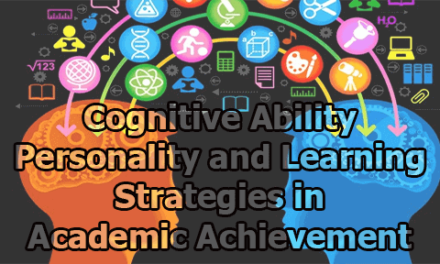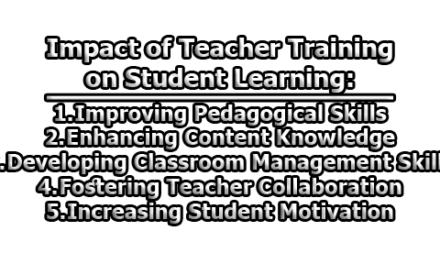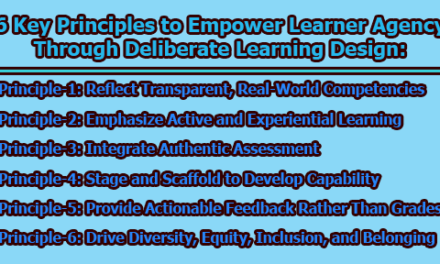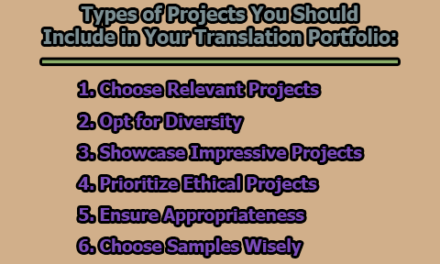The Nine Different Deep Learning Indicators:
Deep learning indicators are a set of characteristics that can help individuals identify their progress in learning deep learning. The indicators are based on the cognitive, emotional, and motivational aspects of learning, and they provide a framework for learners to assess their understanding, skill level, and overall well-being. In this article, we will discuss the nine different deep learning indicators that can increase a learner’s knowledge, insight, ability to regulate the learning process, and emotional state.
Increase the Learner’s Knowledge and Skill:
The first deep learning indicator is increasing the learner’s knowledge and skill. This is the most fundamental aspect of learning, and it involves acquiring new information, developing new skills, and improving existing ones. Deep learning requires a solid foundation in mathematics, statistics, and computer science. Therefore, learners need to invest time and effort in building their knowledge and skills in these areas. Some of the ways to increase the learner’s knowledge and skill include:
- Taking online courses: There are many online courses available that can help learners develop their knowledge and skills in deep learning. Some popular platforms include Coursera, Udacity, and edX.
- Reading research papers: Reading research papers is an excellent way to stay up-to-date with the latest developments in deep learning. Learners can gain insights into new techniques, algorithms, and architectures by reading papers published by top researchers in the field.
- Practicing coding: Coding is an essential aspect of deep learning, and learners need to develop their coding skills to become proficient in the field. Practicing coding challenges and implementing algorithms in code can help learners develop their skills.
- Participating in online forums: Participating in online forums can provide learners with a platform to interact with other learners and experts in the field. Learners can ask questions, share their knowledge, and learn from others’ experiences.
Increase the Learner’s Insight into What They Understand and Can Do:
The second deep learning indicator is increasing the learner’s insight into what they understand and can do. This involves self-reflection and assessment of one’s own knowledge and skills. By developing insight into what they understand and can do, learners can identify areas where they need improvement and focus their efforts accordingly. Some of the ways to increase the learner’s insight into what they understand and can do include:
- Self-assessment: Learners can use self-assessment tools to evaluate their understanding and skills in deep learning. Self-assessment tools can help learners identify their strengths and weaknesses and plan their learning accordingly.
- Peer assessment: Peer assessment involves learners evaluating each other’s work and providing feedback. Peer assessment can provide learners with different perspectives and help them identify areas where they need improvement.
- Keeping a learning journal: Keeping a learning journal can help learners reflect on their learning experiences and track their progress. Learners can use their journals to identify areas where they need improvement and plan their learning accordingly.
- Seeking feedback from experts: Learners can seek feedback from experts in the field to get a better understanding of their knowledge and skills. Experts can provide learners with insights into their strengths and weaknesses and help them develop a plan to improve their skills.
Increase the Learner’s Ability to Regulate the Learning Process:
The third deep learning indicator is increasing the learner’s ability to regulate the learning process. This involves developing metacognitive skills, such as setting goals, monitoring progress, and adapting strategies. By regulating the learning process, learners can become more efficient and effective in their learning. Some of the ways to increase the learner’s ability to regulate the learning process include:
- Setting goals: Learners can set specific, measurable, achievable, relevant, and time-bound (SMART) goals to guide their learning. Goals can help learners stay focused and motivated throughout the learning process.
- Monitoring progress: Learners can monitor their progress regularly to ensure that they are on track to achieve their goals. They can use tools such as progress trackers, checklists, and self-assessments to monitor their progress.
- Adapting strategies: Learners can adapt their learning strategies based on their progress and feedback. They can identify which strategies are effective and which are not and adjust their approach accordingly.
- Time management: Time management is crucial for regulating the learning process. Learners can use time-management tools such as calendars, to-do lists, and timers to manage their time effectively.
Improve the Learner’s Emotional State and Overall Sense of Well-Being in Their Approach to Learning:
The fourth deep learning indicator is improving the learner’s emotional state and overall sense of well-being in their approach to learning. Learning can be challenging and stressful, and learners need to manage their emotions and well-being to achieve their learning goals. Some of the ways to improve the learner’s emotional state and overall sense of well-being in their approach to learning include:
- Practicing self-care: Learners can practice self-care to manage their emotions and well-being. Self-care activities such as exercise, meditation, and relaxation techniques can help learners reduce stress and improve their overall well-being.
- Cultivating a growth mindset: A growth mindset involves believing that one’s abilities can be developed through hard work and dedication. Learners can cultivate a growth mindset by focusing on their progress and efforts rather than their failures and limitations.
- Celebrating successes: Celebrating successes, no matter how small, can help learners stay motivated and positive throughout the learning process.
- Seeking support: Learners can seek support from family, friends, or peers when they feel overwhelmed or stressed. Support can help learners manage their emotions and overcome challenges.
Increase the Learner’s Insight and Ability to Regulate Their Feelings as a Learner:
The fifth deep learning indicator is increasing the learner’s insight and ability to regulate their feelings as a learner. Learning can be an emotional experience, and learners need to manage their feelings to stay motivated and focused. Some of the ways to increase the learner’s insight and ability to regulate their feelings as a learner include:
- Identifying emotional triggers: Learners can identify emotional triggers that affect their learning, such as anxiety or frustration. By identifying their triggers, learners can develop strategies to manage their emotions.
- Developing emotional regulation skills: Emotional regulation skills involve managing one’s emotions effectively. Learners can develop emotional regulation skills by practicing mindfulness, cognitive-behavioral therapy, or other techniques.
- Seeking feedback: Feedback can provide learners with insights into their emotional responses and help them develop strategies to manage their emotions.
- Reflecting on emotions: Learners can reflect on their emotions and how they affect their learning. Reflection can help learners develop self-awareness and identify areas where they need improvement.
Increase the Learner’s Desire to Learn, Including Their Confidence and Willingness to Expend Effort in Learning:
The sixth deep learning indicator is increasing the learner’s desire to learn, including their confidence and willingness to expend effort in learning. Learning requires effort, and learners need to be motivated to invest time and energy in their learning. Some of the ways to increase the learner’s desire to learn, including their confidence and willingness to expend effort in learning include:
- Setting meaningful goals: Learners can set meaningful goals that are aligned with their interests and passions. Meaningful goals can provide learners with a sense of purpose and motivation to learn.
- Providing positive feedback: Positive feedback can increase learners’ confidence and motivation to learn. Learners can seek feedback from peers, experts, or instructors to boost their confidence and motivation.
- Celebrating successes: Celebrating successes can help learners stay motivated and positive throughout the learning process.
- Emphasizing the benefits of learning: Learners can focus on the benefits of learning, such as personal growth, career advancement, or improved problem-solving skills. Emphasizing the benefits of learning can motivate learners to invest time and effort in their learning.
- Exploring new topics and ideas: Exploring new topics and ideas can stimulate learners’ curiosity and desire to learn. Learners can try new activities, read books, or engage in discussions to discover new interests and topics.
Increase the Learner’s Insight and Ability to Regulate Their Motivation:
The seventh deep learning indicator is increasing the learner’s insight and ability to regulate their motivation. Motivation is crucial for learning, and learners need to manage their motivation to achieve their learning goals. Some of the ways to increase the learner’s insight and ability to regulate their motivation include:
- Identifying motivation triggers: Learners can identify what motivates them to learn, such as a desire for achievement, curiosity, or personal growth. By identifying their motivation triggers, learners can develop strategies to maintain their motivation.
- Setting achievable goals: Setting achievable goals can provide learners with a sense of accomplishment and motivate them to continue learning. Learners can break down larger goals into smaller, achievable milestones to maintain their motivation.
- Using intrinsic motivation: Intrinsic motivation involves pursuing an activity for its inherent satisfaction or personal fulfillment. Learners can focus on intrinsic motivation by pursuing activities that align with their interests and passions.
- Seeking external motivation: External motivation involves pursuing an activity for external rewards, such as grades or recognition. Learners can seek external motivation by setting up rewards or incentives for achieving their learning goals.
Increase the Learner’s Awareness and Skill by Employing Various Learning Strategies:
The eighth deep learning indicator is increasing the learner’s awareness and skill by employing various learning strategies. Effective learning requires the use of various strategies, and learners need to develop their awareness and skill in employing these strategies. Some of the ways to increase the learner’s awareness and skill by employing various learning strategies include:
- Identifying learning styles: Learners can identify their learning styles, such as visual, auditory, or kinesthetic, to tailor their learning strategies to their preferences.
- Trying different strategies: Learners can try different learning strategies, such as note-taking, summarizing, or mnemonic devices, to identify what works best for them.
- Applying strategies to different contexts: Learners can apply their learning strategies to different contexts, such as academic, professional, or personal, to develop their versatility in learning.
- Seeking feedback: Feedback can provide learners with insights into their learning strategies and help them develop strategies that are more effective.
Increase the Learner’s Insight and Regulation of Learning Strategies:
The ninth deep learning indicator is increasing the learner’s insight and regulation of learning strategies. Effective learning requires the regulation of learning strategies, and learners need to develop their awareness and skill in regulating their learning strategies. Some of the ways to increase the learner’s insight and regulation of learning strategies include:
- Monitoring progress: Learners can monitor their progress regularly to ensure that they are using effective learning strategies and making progress toward their learning goals.
- Adapting strategies: Learners can adapt their learning strategies based on their progress and feedback. They can identify which strategies are effective and which are not and adjust their approach accordingly.
- Seeking feedback: Feedback can provide learners with insights into their learning strategies and help them develop strategies that are more effective.
- Reflecting on learning strategies: Learners can reflect on their learning strategies and how they affect their learning. Reflection can help learners develop self-awareness and identify areas where they need improvement.
From the above discussion, we can say that deep learning indicators provide a framework for learners to develop their knowledge, skills, and attitudes toward learning. By increasing their awareness and regulation of learning processes, learners can become more effective and efficient in their learning, leading to better outcomes and a sense of fulfillment. The nine different deep learning indicators discussed in this article provide a roadmap for learners to follow in their learning journeys, and educators can use these indicators to design and implement effective learning experiences.
Effective learning requires a holistic approach that considers learners’ cognitive, emotional, and social dimensions. Deep learning indicators can help learners develop these dimensions and become more self-directed and motivated in their learning. By increasing their knowledge, skills, and attitudes, learners can become lifelong learners who are capable of adapting to changing circumstances and pursuing their goals with confidence.
As the world becomes increasingly complex and dynamic, the ability to learn and adapt is becoming more critical than ever. Deep learning indicators offer a practical and actionable framework for learners to develop the skills and attitudes they need to thrive in the 21st century. Whether learners are pursuing academic, professional, or personal goals, deep learning indicators can help them achieve success and fulfillment in their learning journeys.
References:
- American Psychological Association. (2015). Learner-centered psychological principles: Guidelines for school redesign and reform. Retrieved from https://www.apa.org/ed/schools/learner-centered
- Armstrong, P. (2012). How to develop a growth mindset. Education Week. Retrieved from https://www.edweek.org/leadership/opinion-how-to-develop-a-growth-mindset/2012/11
- Azevedo, R., & Hadwin, A. F. (2005). Scaffolding self-regulated learning and metacognition: Implications for the design of computer-based scaffolds. Instructional Science, 33(5-6), 367-379.
- Biggs, J. (1999). Teaching for quality learning at university: What the student does. Buckingham, UK: SRHE and Open University Press.
- Boekaerts, M. (1999). Self-regulated learning: Where we are today. International Journal of Educational Research, 31(6), 445-457.
- Bransford, J. D., Brown, A. L., & Cocking, R. R. (Eds.). (2000). How people learn: Brain, mind, experience, and school. Washington, DC: National Academies Press.
- Butler, D. L., & Winne, P. H. (1995). Feedback and self-regulated learning: A theoretical synthesis. Review of Educational Research, 65(3), 245-281.
- Dignath, C., & Büttner, G. (2008). Components of fostering self-regulated learning among students: A meta-analysis on intervention studies at primary and secondary school level. Metacognition and Learning, 3(3), 231-264.
- Donker, A. S., de Boer, H., Kostons, D., van der Werf, G. P. C., & Beishuizen, J. J. (2014). Effects of self-regulated learning support on students’ motivation and learning in mathematics. Journal of Educational Psychology, 106(2), 424-437.
- Dweck, C. (2006). Mindset: The new psychology of success. New York: Random House.
- Eccles, J. S., & Wigfield, A. (2002). Motivational beliefs, values, and goals. Annual Review of Psychology, 53, 109-132.
- Hattie, J. (2012). Visible learning for teachers: Maximizing impact on learning. London: Routledge.
- Hmelo-Silver, C. E. (2004). Problem-based learning: What and how do students learn? Educational Psychology Review, 16(3), 235-266.
- Kirschner, P. A., Sweller, J., & Clark, R. E. (2006). Why minimal guidance during instruction does not work: An analysis of the failure of constructivist, discovery, problem-based, experiential, and inquiry-based teaching. Educational Psychologist, 41(2), 75-86.
- Knowles, M. S., Holton III, E. F., & Swanson, R. A. (2014). The adult learner: The definitive classic in adult education and human resource development. London: Routledge.
- Langer, E. J. (2014). Mindfulness. New York: Addison-Wesley.
- Lepper, M. R., Woolverton, M., Mumme, D. L., & Gurtner, J. L. (1993). Motivational techniques of expert human tutors: Lessons for the design of computer-based tutors. In C. Frasson, G. Gauthier, & G. McCalla (Eds.), Intelligent Tutoring Systems (pp. 145-158). Berlin, Germany: Springer-Verlag.
- McCombs, B. L. (2015). Learner-centered psychological principles: A framework for school redesign and reform. In S. B. Kaufman, R. J. Sternberg, & C. K. Dweck (Eds.), The Cambridge Handbook of Creativity and personality research (pp. 380-397). New York: Cambridge University Press.
- National Research Council. (2000). How people learn: Brain, mind, experience, and school. Washington, DC: National Academies Press.
- Pintrich, P. R. (2000). Multiple goals, multiple pathways: The role of goal orientation in learning and achievement. Journal of Educational Psychology, 92(3), 544-555.
- Pintrich, P. R., & Schunk, D. H. (2002). Motivation in education: Theory, research, and applications (2nd ed.). Upper Saddle River, NJ: Merrill Prentice Hall.
- Rosário, P., Núñez, J. C., Vallejo, G., Cunha, J., Nunes, T., Mourão, R., & González-Pienda, J. A. (2013). Self-regulated learning in mathematics: A long-term study with engineering students. The Journal of Educational Research, 106(3), 157-168.
- Salomon, G., & Perkins, D. N. (1998). Individual and social aspects of learning. Review of Research in Education, 23, 1-24.
- Schunk, D. H., & Zimmerman, B. J. (Eds.). (2008). Motivation and self-regulated learning: Theory, research, and applications. New York: Routledge.
- Vygotsky, L. S. (1978). Mind in society: The development of higher psychological processes. Cambridge, MA: Harvard University Press.
- Wigfield, A., & Eccles, J. S. (2000). Expectancy-value theory of achievement motivation. Contemporary Educational Psychology, 25(1), 68-81.
- Zimmerman, B. J. (2002). Becoming a self-regulated learner: An overview. Theory into Practice, 41(2), 64-70.
- Zimmerman, B. J. (2013). From cognitive modeling to self-regulation: A social cognitive perspective on student academic performance. Educational Psychologist, 48(3), 135-147.
- Zimmerman, B. J., & Schunk, D. H. (Eds.). (2011). Handbook of self-regulation of learning and performance. New York: Routledge.

Library Lecturer at Nurul Amin Degree College

